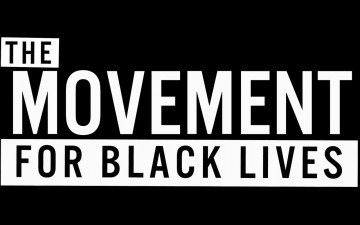
It’s been over a week since The Movement for Black Lives convening ended, and I’m still in awe. When I loaded a bus that was heading to the convening in Cleveland not knowing anyone, I had no idea what to expect. After moving to NYC four months ago, I’d been aching for a while to find the right activist home for me in the city, but had no idea how to begin. When a Facebook friend deep in the movement suggested I go to M4BL, I trusted that I would at least make some good connections and moved my schedule around as…
It’s been over a week since The Movement for Black Lives convening ended, and I’m still in awe. When I loaded a bus that was heading to the convening in Cleveland not knowing anyone, I had no idea what to expect. After moving to NYC four months ago, I’d been aching for a while to find the right activist home for me in the city, but had no idea how to begin. When a Facebook friend deep in the movement suggested I go to M4BL, I trusted that I would at least make some good connections and moved my schedule around as much as possible to make it happen.
So while not knowing what was going on, or what to expect, I definitely would have never imagined what actually occurred:
A life-affirming experience. Transformational. Magical. Something that rocked me deep to my core in ways I would have never imagined. The amount of knowledge being shared, along with the deep love showcased both inwardly and outwardly by the organizers and attendees made me feel like, and utter out loud to one of my new connections, that “this is what Heaven must feel like.” And I wasn’t exaggerating.

Condensing all that I learned and experienced into 10 points does not do the convening justice, but here goes my best attempt:
10. The new Black Liberation Movement is lead by the youth.
The gathering was fully intergenerational, with children dancing to the sound of the drums in between workshop sessions (and sometimes playing them themselves), with elders leading some of the workshops, and with numerous families present. But of the almost 2,000 people attending, the vast majority were Black Millennials, and that includes both the leadership and the attendees.
9. The new Black Liberation Movement is fully inclusive.
The day before I boarded the bus, I got a confirmation call and then a confirmation email from the transportation organizers. They drove certain points home over and over: The Movement for Black Lives convening would be an inclusive space, where sexual orientation, and gender identity and expression, as well as where age, differently-abled bodies, and religious beliefs would be completely respected. They also insisted that the convening would be a safe space for girls and women, free of sexism and misogyny.
As a cis woman, I felt like my promise was fulfilled. There was not a single moment in which I felt unsafe, or that my voice was overridden by a man’s. However, things weren’t at times ideal for our LGBT brothers and sisters. Mishaps, such as not having gender inclusive bathrooms in the university might have been annoying as the organizers tried to fix it. However, on the first night, the venue chosen for a party by the organizers wasn’t trans inclusive, and kicked out a participant from the men’s room. While the party was shut down, and they protested against the venue, it showcased that more work had to be done to fulfill a promise of inclusivity. The organizers acknowledged this during one of the plenaries, took responsibility, and spoke of future fixes.
I’d never before seen a movement that made it a point to be inclusive, and to be self-critical when things weren’t going as it should. This heartened me, as much as everything else during the conference.
8. The Movement acknowledges the problems with colorism, instead of brushing it under the carpet.
Colorism within communities of color is as real as it is denied. Countries that have been colonized and slaved often have deep-rooted internalized racism issues, which lead to numerous painful behaviors and beliefs. As a Dominican woman of color, I’ve had numerous people try to deter me from dating darker men, so as to prevent our possible future children from being dark as well. I have a close friend that is not Dominican but is also foreign, that has used skin-bleaching creams. I’ve heard numerous dark African American men say they don’t date dark women. In most communities of color, lighter has been equated with better.
However, as painful and pervasive as this is, our communities insist on denying it. This is not something that was skirted or avoided during the conference, and as one of the workshop leaders, Sanyika Bryant said “The contradictions within our community need to be addressed, or they can be exploited.”
7. Women of Color, trans and cis, are being erased from the movement. However, many women are fighting to ensure our visibility.
Sandra Bland has gotten us to #SayHerName. Her beauty, her light, her pro-blackness shone through and made a lot of people question the suspicious events around her death, as well as her seemingly wrongful arrest. However, #SayHerName is nothing new, as activists have spent years trying to bring the stories of women of color to the forefront when people act as if black men are the only ones being killed. The only ones suffering from police misconduct.
For example, in 2013, of all of the men stopped by the NYPD, 55.7 percent were black and 29.3 percent were Latino. However, rates for women are similar, with 53.4 percent of the women stopped being black. Also, CATO reports that “Sexual misconduct was the second most common form of reported police misconduct [after excessive force]. However, you never hear of these cases. You don’t hear of Nizah Morris, or Sheneque Proctor, or Kayla Moore. There are no trending hashtags to their name. No viral push for their justice.
And as Charlene Carruthers stated: “When you don’t tell full stories, you don’t get complete solutions.” There are numerous reasons behind this, but as Andrea Ritchie stated, it has a lot to do with “who gets seen as a worthy victim. Who is seen as worth fighting for, and why.”
6. Women, trans and cis, also face dire situations in Immigration Detention Centers.
When transgender activist Jennicet Gutierrez protested last month at a White House reception for LGBT Pride month, most news outlets focused on Obama’s response, rather than on he issues she was trying to bring attention to. Personally, I didn’t pay much attention either. But as people of color, we should care: transsexual women are constantly placed in men’s wards, where they are often harassed and sexually assaulted. Women, both trans and cis, also face demands of sex in exchange for not being deported, or of being allowed into the country if caught at the border.
These are the most vulnerable of our women. Poor, undocumented, and oftentimes unheard due to their legal status.
5. The Civil Genocide in the Dominican Republic is more complex than I had imagined.
As a Dominican woman, I’m completely against the actions my country has recently taken towards Dominicans of Haitian descent. I’ve been fully aware for years now that my people can be extremely racist and xenophobic. I love my country, my culture, and my people, but truth is truth.
However, I didn’t realize how intricate what’s going on really is. To cite We Are All Dominican: “Hundreds of thousands of Dominicans of Haitian descent have been stripped of their citizenship and made stateless by their own government; and hundreds of thousands of Haitian migrants may face mass deportations following the end of a registration process for undocumented immigrants.” However, a lot of the propaganda being disseminated by the government makes it sound like the actions are only being taken towards Haitian immigrants, even though their actions are retroactive to 1929.
Also, regardless of the government’s supposed actions to fix the problems, hundreds of thousands of Dominicans of Haitian descent are now stateless, and may be deported to Haiti, who also doesn’t claim them.
4. This means that Dominican of Haitian descent are in a state of limbo.
People that have been born in Dominican Republic, have grown up in Dominican Republic, and know nothing but the Dominican Republic are now in a state of limbo. They are being denied a cedula, the national ID, and without it they can literally do nothing: they can’t go to university, can’t work, can’t travel, can’t give their children documents, can’t marry, or even get a cellphone contract.
However doing this violates the constitution that existed when they were born.
The Dominican Republic has chosen to ignore the calls by foreign bodies as well as intercontinental organizations to even have a conversation with Haiti on the subject. However, foreign bodies have been decrying DR’s treatment of Haitians for over a decade, and the government decided to simply withdraw from the Inter-American Court of Human Rights which not only leaves those of Haitian descent vulnerable, but also every other Dominican citizen, should other human rights violations occur.
3. The U.S. has been cited by the UN for police violence and racism.
Countries from Chad to China, Pakistan and Russia agree that the “the human rights situation in the [U.S.] has seriously deteriorated recently.” Seriously.
2. We gon’ be alright.
The convening had a unique soundtrack, including the songs and spoken word of the participants in impromptu jam sessions. However, one specific song played over and over to the enjoyment of the attendants: Kendrick Lamar’s “Alright.” In it, the rapper proclaims:
I’m at the preacher’s door
My knees gettin’ weak and my gun might blow but we gon’ be alright
After witnessing so many beautiful black people, determined to learn, to fight, to survive, and to thrive, I have no question that we’re going to address the issues stated above, and win.
This was showcased at the end of the convening when a group of attendees protested the possible arrest of a teenager by the Cleveland Police. Even after being maced unnecessarily by the police, the protesters held strong, which led to the release of the young man to his mother.
1. My love for black people is deep and unyielding.
While being born in DR, I grew up in Spain. One of the reasons I wanted to move to the U.S. was because when I was a teen in Spain I just didn’t see me, represented. Hardly any People of Color in the media, and hardly any People of Color anywhere I lived or visited. I knew that would change if I came to the States. And it did, and it’s been great, but the convening’s experience was unlike anything I’ve ever had before. Almost 2,000 beautiful, positive, amazing, forward thinking black people all in one place. Almost 2,000 pro-black black people. Almost 2,000 black people working for the advancement of black people. Dancing, teaching, singing, sporting every type of hairstyle, chanting and being unapologetically Black.
And all of this in an LGBT loving, anti-misogynistic space.
It was simply magical. And it simply cemented that really, we gon’ be alright.
— This feed and its contents are the property of The Huffington Post, and use is subject to our terms. It may be used for personal consumption, but may not be distributed on a website.
Jump to original:
10 Things I Learned at the Movement for Black Lives Convening

























